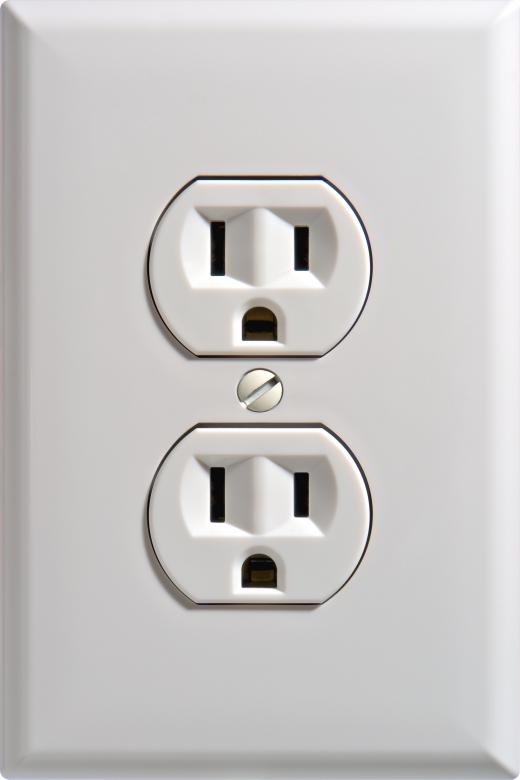A diode bridge is an assembly of four diodes interconnected in such a way that an alternating current (AC) power supply applied to two of the four points of the bridge will produce a direct current (DC) output on the remaining two. A diode bridge is thus an electrical component for smoothing or rectifying an AC power supply to produce a DC output. A very good example of this assembly at work is an AC mobile phone charger which, when plugged into an AC power outlet, supplies a DC current to charge the phone.
To understand the operation of a diode bridge, it is necessary to know the basic differences between AC and DC power, and how diodes work. Most people are well acquainted with the use of batteries in household appliances, toys, cameras, and phones. A battery is a good example of a DC power supply that has a set polarity, i.e., a set positive and negative terminal that never changes. The AC power supply encountered in a domestic power socket has an alternating polarity which reverses approximately 50 to 60 times per second.

When using an AC power supply to drive a DC appliance, this alternating or reversing AC polarity has to be smoothed or rectified to produce the stable, unchanging polarity that characterizes a DC power supply. Without this rectification, the AC power would damage or destroy the appliance. In most applications, this smoothing is achieved by using a bridge rectifier or diode bridge.

Diodes are electronic components that allow electrical current to flow in one direction only. When four diodes are interconnected in a rectification configuration, they will effectively cut off one half of the alternating cycle of AC power and leave one half to pass through the bridge. The power that is allowed to pass through the diode bridge is not particularly smooth DC current but at least does exhibit a stable polarity or positive-negative relationship. This is known as half wave rectification since half of the AC cycle wave is removed or blocked. To smooth the remaining AC ripple out of the supply, capacitors can be inserted across the positive and negative outputs.
Diode bridges are used to produce DC power in a host of different applications ranging from tiny power supplies on electronic circuit boards to huge industrial examples capable of powering large DC electromagnets and motors. The physical size of the assembly is all that changes in these applications; the basic construction of the bridge remains the same. Although there are other ways of producing DC power from AC supplies, the diode bridge remains the cheapest and most convenient method.
